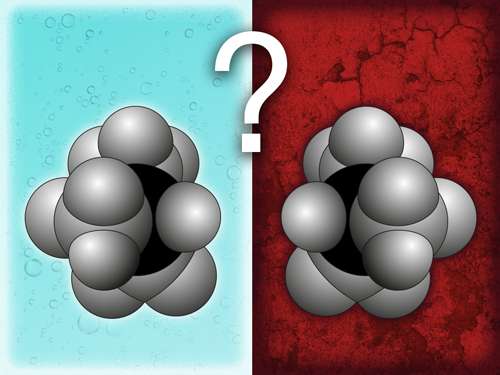Exploring the universe of biochemical reactions

Scientists at EMBL-EBI have developed EC-BLAST: software that makes it easier to develop novel enzymes. Published in Nature Methods, the program makes it possible to quickly compare the functions of thousands of catalysts, facilitating research into anything from drug interactions to the efficient production of biofuels.
Washing machines and cookers might look much the same, but they do very different things. Similarly, while enzymes may look very much alike, a biologist who needs to speed up a specific reaction would want to compare them according function, rather than sequence.
Enzymes are proteins that are involved in countless reactions, from breaking down cellulose to synthesising DNA, and their functions depend on a very wide range of factors. Until now, comparing reactions was an arduous, manual process. The new EC-BLAST makes it possible to quickly compare a potentially useful enzyme against thousands of well-known reactions.
"If you are looking to swap one enzyme for another – say to make cheese differently or to break down sugar cane into ethanol – you would want to know exactly what reactions they are involved in, in which metabolic pathways," explains Professor Dame Janet Thornton. "EC-BLAST gives you a knowledge-based approach for this, because it combines everything we know about biological catalysis: where it is similar, where it is different, how enzymes have evolved and how they might continue to change. It really provides an overview of the world of biochemical reactions."
The computer scientists, chemists, biologist and physicist who developed EC-BLAST spent five years working through roadblocks to quantifying the comparison of enzymes already well described by the Enzyme Commission (EC). The interdisciplinary approach was vital to ensuring the final product was fit for purpose.
"EC-BLAST contains a series of algorithms that draw on a library that integrates our knowledge about structures, chemical transformations, bond changes, stereochemistry and other enzyme features," says Syed Asad Rahman, the computer scientist and programmer behind many of the algorithms. "We've basically created a binary fingerprint for these enzymes – a kind of reaction profile – that we hope will be very useful to people working in green biotech, drug discovery and many other areas."
You can try the new software and provide feedback at www.ebi.ac.uk/thornton-srv/software/rbl/
More information: Rahman, S.A., Martinez Cuesta, S., Furnham, N., Holliday, G.L. and Thornton, J.M. (2014) EC-BLAST: A Tool to Automatically Search and Compare Enzyme Reactions. Nat Methods (in press). Published online 12 January; DOI: 10.1038/nmeth.2803
Journal information: Nature Methods
Provided by European Molecular Biology Laboratory



















